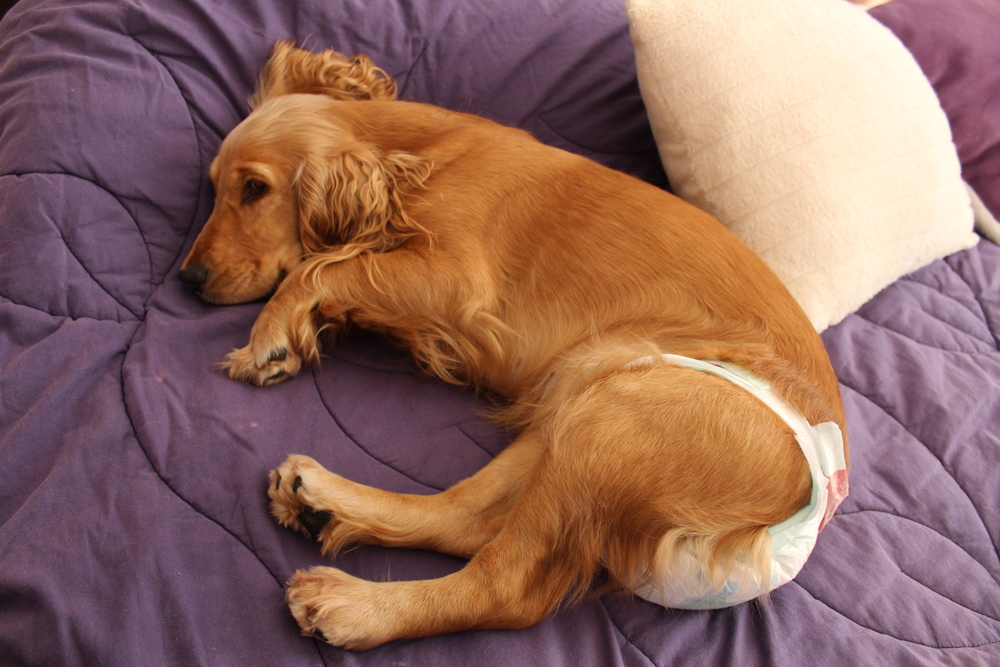Pregnancy, puppies, periods, preparing for labour… there really is so much to know about dog fertility. If you’re curious about how it all works, or planning to breed your own pooch, we’ve put together answers to some frequently asked questions.
Because the world of breeding dogs is so incredibly wide, we’ve split our FAQ in two. In part one below, we’ll be covering dog fertility – think things like heat cycles, litters, and infertility. In part two, we’ll look at dog pregnancy, labour, and looking after a pooch after they give birth. Check it out here.
Frequently asked questions about dog fertility
Do female dogs get periods?
Yes, sort of! But a dog’s period is quite different from a human’s.
Female dogs experience a bit of bloody discharge when they’re on heat, which is somewhat like a human period.
The difference, though, is that while a human menstural cycle lasts 28 days, a dog’s lasts upwards of six months. This means they get a “period” roughly twice per year.
This bloody discharge is part of a dog’s heat cycle, also known as an estrus cycle.
How does the estrus cycle work?
The estrus or heat cycle goes for between 18 and 21 days, but can last as long as 30 days.
It starts with the bloody discharge we mentioned earlier plus a bit of swelling around the vulva area, lasting 7 to 10 days. The first part of the cycle is called “proestrus”.
After that, the dog’s discharge decreases and becomes less bloody. Her vulva softens and swells even more, and she becomes more welcoming to male dogs who are interested in mating. This part of the cycle – known as “estrus” – can last anywhere from 3 to 10 days.
Finally, the diestrus phase starts. This is when the vulva shrinks back to its usual size, the dog’s discharge becomes redder, and she stops being receptive to breeding. It takes between 7 and 10 days for a dog to return to normal, after which the heat cycle is complete.
How often do dogs go on heat?
On average, female dogs go on heat twice per year – roughly every six months. However, this can vary pretty wildly.
Small dog breeds, for example, can go on heat up to four times per year. In some very large breeds (such as Great Danes), the heat cycle may only occur once a year or even once every 18 months.
Male dogs don’t really go on heat. Instead, they can pretty much mate year-round – as long as the female is receptive to it, of course!
How can you tell if a dog is on heat?
There are some tell-tale signs that a female dog is on heat. These include:
- Bloody discharge coming from the vulva (note that some dogs may have heavier bleeding, which can be normal. If you’re concerned, though, chat to your vet)
- Swelling of the vulva
- Licking the vulva area
- Weeing more frequently
- New weeing behaviours, such as marking
- Whining
In male dogs, you may notice heavy whining, lack of appetite, and overzealous behaviour around a female who’s on heat. This is a solid sign that the female dog is in the estrus phase, when she’s receptive to mating.
It’s crucial you keep your pupper on a quality dog lead if you’re walking him or her while on heat. Their desire for the opposite sex can sometimes make them hard to control!
What time of year is dog breeding season?
For most dogs, there actually isn’t a particular time of year that they have a breeding season.
Interestingly, though, this isn’t the case for Basenjis, Malamutes, and Tibetan Mastiffs. These breeds usually go on heat once per year during spring.
What age can dogs start breeding?
Both male and female dogs reach sexual maturity around six months old. However, bigger breeds might take a bit longer – sometimes up to 18 months or two years.
Male dogs can pretty much start breeding from this point onwards. With female dogs, it’s best to wait until they’ve gone through their first heat cycle. But most responsible breeders will wait until females are at least 18 months old.
When should dogs stop breeding?
It’s widely accepted that female dogs shouldn’t be bred after the age of seven to eight years old, or after producing four litters. This is because they’re more likely to experience complications during delivery.
Males can continue breeding until they’re much older, as long as they’re fertile. In saying that, sperm function and quantity goes down as male dogs age.
How many litters can female dogs have every year?
A dog can technically have up to four litters per year (one per heat cycle). But responsible breeders will give their female dog a break between litters so she’s not breeding non-stop. The ideal length of time between litters is around 18 months to two years.
Male dogs will mate with practically any female dog, though. If given the opportunity, they can sire as many litters as possible.
Can dogs be infertile?
Yes, they can. There are a number of reasons behind female dog infertility, including:
- Poor breeding management (often, not mating in the right window)
- Disease or infection
- Cysts or a tumor on the ovaries
- Hormonal issues
- Genetic disorders
- Malnutrition
In male dogs, reasons include an inability to ejaculate or mate, prostate issues, and poor-quality semen.
A vet should be the first port of call if you suspect your dog is infertile. They’ll advise on the best course of treatment to try and alleviate the issue.


1 comment
Understanding dog fertility is important for pet owners who are considering breeding their dog or who are looking to have their dog spayed or neutered.By understanding dog fertility, pet owners can make informed decisions about breeding and sterilization, and ensure the health and well-being of their furry companion.